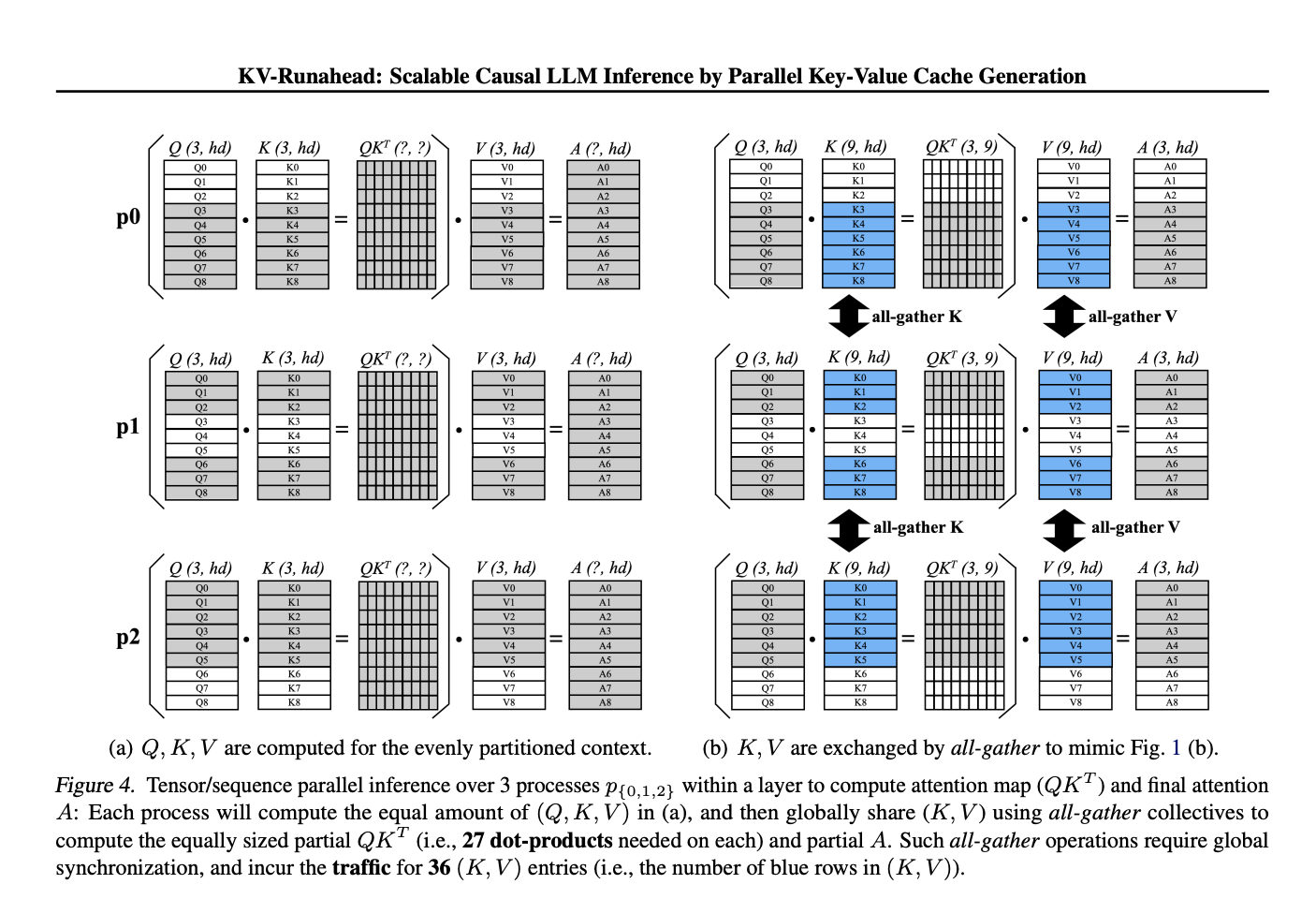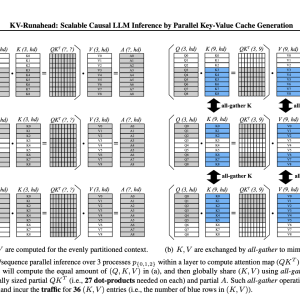

Large language models (LLMs), particularly Generative Pre-trained Transformer (GPT) models, have demonstrated strong performance across various language tasks. However, challenges persist in their decoder architecture, Specifically in time-to-first-token (TTFT) and time-per-output token (TPOT). TTFT, reliant on extensive user context, and TPOT, for rapid subsequent token generation, have spurred research into memory-bound solutions like sparsification and speculative decoding. Parallelization, through tensor and sequential methods, addresses compute-bound TTFT but still lacks optimization for scalable LLM inference due to inefficiencies in attention computation and communication.
Generative LLM inference entails a prompt phase, where initial tokens are generated after receiving user context, and an extension phase, using cached key-value embeddings to expedite subsequent token generation. To minimize TTFT for long contexts, efficient KV-cache management and fast attention map computation are vital. Various optimization approaches, such as PagedAttention and CacheGen, address these challenges. Parallelization techniques like tensor and sequence parallelism aim to optimize compute-bound TTFT, with innovations like KV-Runahead further enhancing scalability and load balancing for improved inference efficiency.
Apple researchers present a parallelization technique, KV-Runahead, tailored specifically for LLM inference to minimize TTFT. Utilizing the existing KV cache mechanism, KV-Runahead optimizes by distributing the KV-cache population across processes, ensuring context-level load-balancing. By capitalizing on causal attention computation inherent in KV-cache, KV-Runahead effectively reduces computation and communication costs, resulting in lower TTFT compared to existing methods. Importantly, its implementation entails minimal engineering effort, as it repurposes the KV-cache interface without significant modifications.
KV-Runahead is contrasted with Tensor/Sequence Parallel Inference (TSP), which evenly distributes computation across processes. Unlike TSP, KV-Runahead utilizes multiple processes to populate KV-caches for the final process, necessitating effective context partitioning for load-balancing. Each process then executes layers, awaiting KV-cache from the preceding process via local communication rather than global synchronization.
Researchers conducted experiments on a single node equipped with 8× NVidia A100 GPUs, under both high (300GB/s) and low (10GB/s) bandwidth conditions. KV-Runahead, utilizing FP16 for inference, was compared against Tensor/Sequence Parallelization (TSP) and demonstrated superior performance, consistently outperforming TSP in various scenarios. Different variants of KV-Runahead, including KVR-E with even context partitioning, KVR-S with searched partitioning, and KVR-P with predicted partitioning, were evaluated for efficiency. KV-Runahead achieves significant speedups, particularly with longer contexts and more GPUs, even outperforming TSP on low bandwidth networks. Also, KV-Runahead exhibits robustness against non-uniform network bandwidth, showcasing the benefits of its communication mechanism.
In this work, Apple researchers introduced KV-Runahead, an effective parallel LLM inference method aimed at reducing time-to-first-token. KV cache achieved a significant speedup, over 60% speedup in the first token generation compared to existing parallelization methods. Also, KV-Runahead demonstrates increased resilience in scenarios with non-uniform bandwidth environments.
Check out the Paper. All credit for this research goes to the researchers of this project. Also, don’t forget to follow us on Twitter. Join our Telegram Channel, Discord Channel, and LinkedIn Group.
If you like our work, you will love our newsletter..
Don’t Forget to join our 42k+ ML SubReddit
The post Apple Researchers Propose KV-Runahead: An Efficient Parallel LLM Inference Technique to Minimize the Time-to-First-Token appeared first on MarkTechPost.